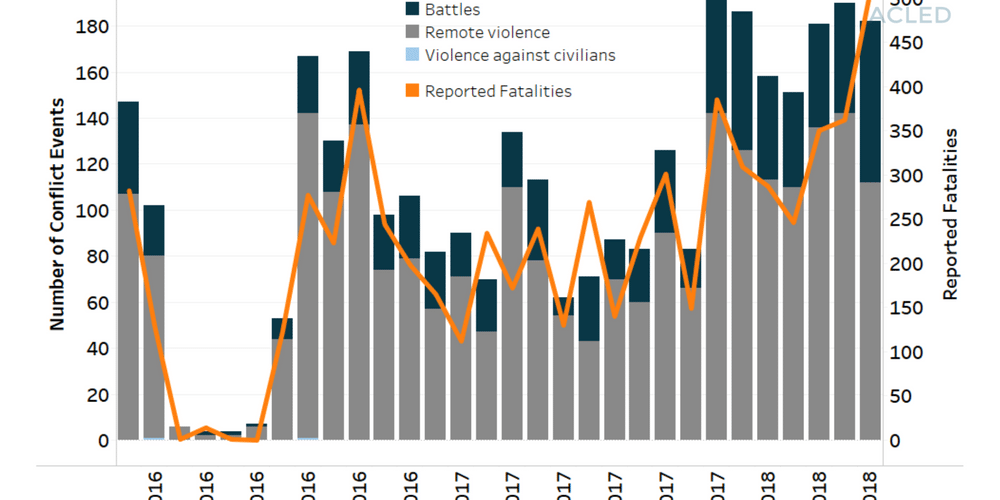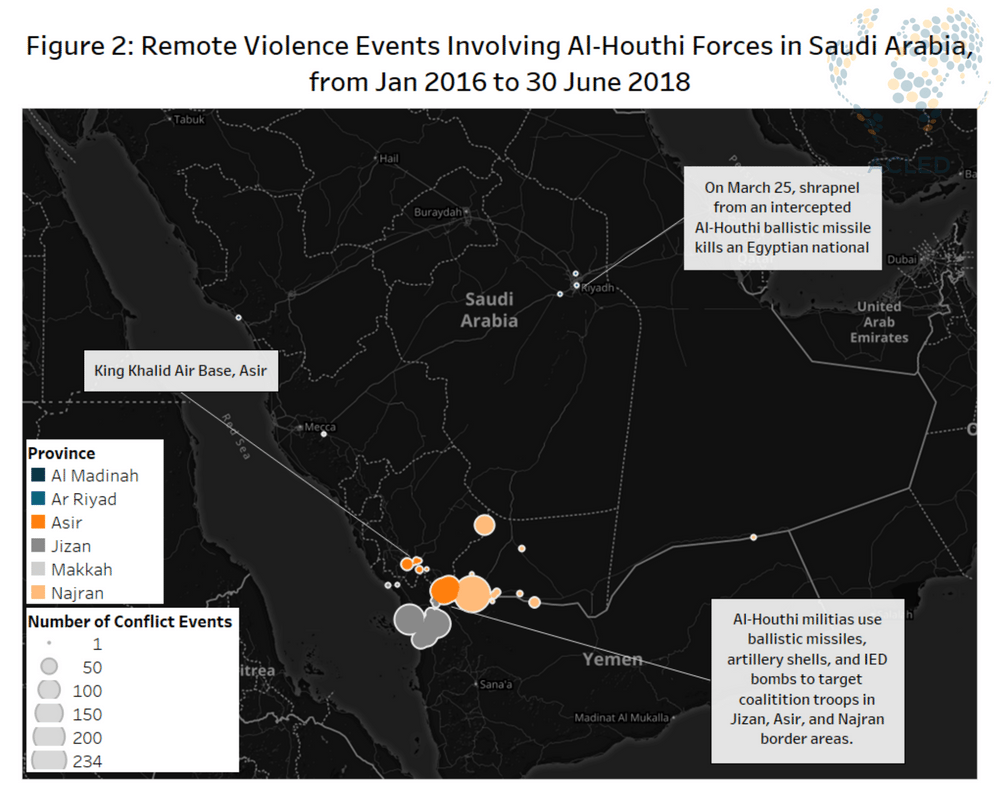Since the beginning of Saudi Arabia’s bombing campaign in support of Yemeni president Abdrabbuh Mansour Hadi in 2015, Houthi forces have consistently mounted counter-attacks targeting border posts and cities along Saudi Arabia’s southern border. Although many attacks are conducted by militias fighting guerilla style, there has recently been an increase in the number of missile and armed drone strike attempts targeting cities further north into Saudi territory, including in Riyadh. In addition to Saudi ground troops, soldiers combatting Houthi fighters and missile barrages reportedly include Salafist militiamen from the southern regions of Yemen and a number of other coalition troops, such as Sudanese soldiers and Green Berets from the US army.
Media reports from the border conflict area are heavily polarized, with pro-Houthi sources often claiming to have inflicted “dozens” of casualties per attack. Saudi media sources only occasionally report on the border conflict, intermittently publishing the names of soldiers killed on the frontline or issuing reports on civilian casualties as a result of Houthi missile strikes. Figure 1 visualizes the number of events and of reported conflict-related fatalities in Saudi Arabia’s southern provinces, as reported in media sources monitored by ACLED (with the pro-Houthi Saba News Agency reporting the vast majority of the events). Reports issued in 2016 suggest that Saudi authorities have evacuated many of the southern towns and villages, with some of them seized by the Houthi forces.
The historical homeland of the Houthi movement in Sadah governorate of Yemen has borne the brunt of the Saudi-led coalition’s bombing campaign. While coalition warplanes continue to conduct airstrike raids within the governorate, Houthi forces have responded by firing artillery across the border and an increasing number of long-range ballistic missiles at targets within Saudi Arabia, in particular after the breakdown of the alliance with Ali Abdullah Saleh. Ballistic missiles fired into Saudi Arabia are usually shot down by air-defense systems, with civilians occasionally being killed or wounded by shrapnel (see Figure 2 for the Houthis’ use of remote violence in Saudi Arabia). In a recent strike on March 25, Al-Houthi missiles caused casualties in Riyadh for the first time, marking a serious escalation in the missile campaign. A report issued by the New York Times later revealed that US Green Berets had been deployed to the border region to assist Saudi forces in targeting missile launch sites in Yemen following the attack.
Throughout the war, Al-Houthi officials have made it clear that missiles were launched at targets within Saudi Arabia in response to airstrikes on Yemeni territory. As the war in Yemen escalates with a recent coalition advance on the port city of Hodeidah, Houthi border incursions and missile strikes in Saudi Arabia have continued at a steady pace, posing a constant threat to those in Saudi Arabia’s cities. Renewed attempts by coalition members, including the UAE, to take territory from Houthi forces in the north and western coastal areas of Yemen most likely represent a reaction by coalition officials who view Houthi threats as increasingly dangerous. Recent statements made by Houthi officials have warned that missiles could strike as far as Abu Dhabi (UAE). As Houthi strike capabilities continue to improve, coalition forces will likely attempt to quickly take as much territory from Houthi control as possible to deny the militias launch sites.
Find an explanation of ACLED’s methodology for monitoring the conflict in Yemen here.








